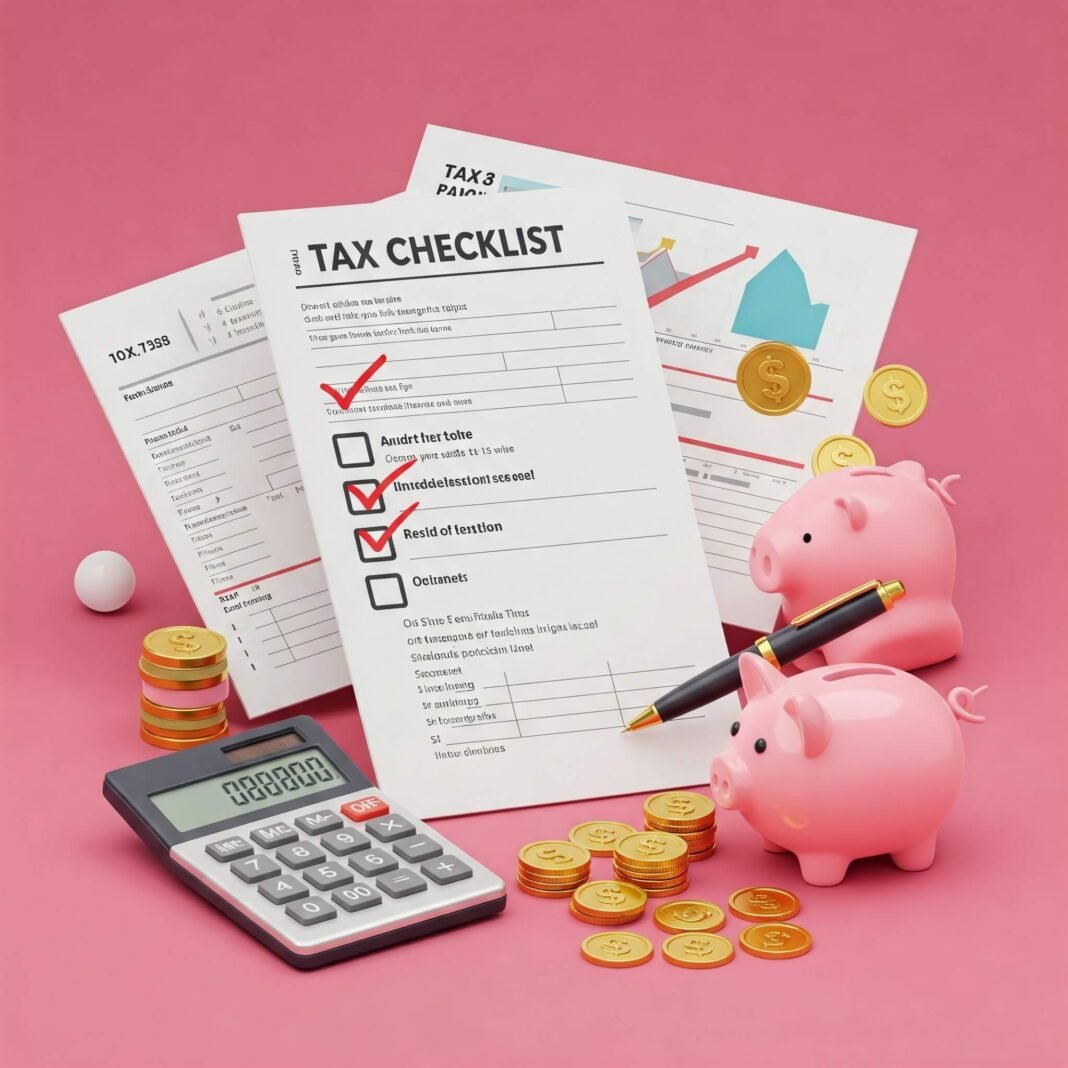Okay, listen. Diving into my tax planning checklist for 2025 feels nuts. I’m in my sticky-floored flat in Mumbai. The ceiling fan whirs like a horror movie prop. Curry fumes from next door hit like my new perfume. Seriously? Me, this lanky American? I’m better at dodging street cows than dodging audits. Last year, I forgot my podcast side-hustle gigs. Boom. IRS letter slammed harder than monsoon rain. If you’re fumbling fiscal year prep like me, this tax planning checklist for 2025 is my raw lifeline. No corporate BS. Just my hot-mess tips. I’ve learned taxes turn your wallet into an empty samosa wrapper if you ignore ’em.
Why This Tax Planning Checklist for 2025 Hit Me Like a Rickshaw to the Gut
Man, my tax planning checklist for started as panic. Picture 2 a.m. Sweat glues me to my cot. I’m scrolling IRS.gov on a dying phone. Street dogs bark like they’re filing complaints. I’m an American in India. Green card dreams clash with rupee life. I even googled deducting elephant rides. Spoiler: Nope. But dream big, right? Raw truth? I blew off 2025 tax strategies till I underpaid $800. Forgot my home office. My Mumbai balcony counts if you squint. It’s contradictory. I love expat freedom. Taxes? They make me wanna hide under a dhoti. If you feel “I got this” mixed with “Oh god,” stick around. This checklist unpacks it. No fluff.
The Emotional Rollercoaster of Kicking Off Your Tax Planning Checklist for 2025
Grab a chai. Make it strong. No sugar. This gets bitter. My wake-up? Tax planning checklist for is a shield. It blocks surprise soul-sucks. I ugly-sobbed once over a missed donation. Gave old sneakers to a Mumbai orphanage. Felt heroic. Forgot the receipt. Embarrassing? Yeah. But it taught me: Track everything. Even $20 to a street kid’s art fund. Contradictions hit hard. I’m all “YOLO” on street food. But taxes? Adulting’s dirty secret. Pro tip from my flawed self: Start a “tax jar.” Mine’s a recycled masala tin. Stuff receipts in. Instant habit. Boom.

Core Steps in My Tax Planning Checklist for 2025—’Cause Mine Were a Hot Mess
Let’s break it down. Rambling forever helps no one. My tax planning checklist for 2025 came from chaos. I filed late once. Too busy haggling mangoes at Crawford Market. Ripe fruit smells. Honking horns. Deadline? Forgotten. Insight? Structure saves sanity. Here’s the meat. From my stumbles. Links to pros too. Don’t trust just my Yankee screw-ups. Shoutout to the IRS Interactive Tax Assistant. It bailed me out last quarter. Lifesaver.
Nailing Income Tracking in Your Tax Planning Checklist for 2025
Track every gig. Freelance writes. That Etsy shop with “Namaste ‘Merica” tees. I missed a 1099 last year. Ouch. Cost me sleep. Use QuickBooks. Check their small business tax guide. Log it all. Tedious? Sure. Better than 3 a.m. bank app refreshes in blackouts.
Maxing Deductions: The Heart of My Tax Planning Checklist for 2025
Home office? Claim it. Even with a yoga mat corner. Mine has mosquito netting. Deductible? Kinda. See TurboTax’s home office rules. Charities? Log ’em. I “donated” my ex’s vinyls to Bandra thrift. Blank on value. Surprise: Feels good. Like karma.
Retirement plays. IRAs. 401(k)s. Rolled mine over mid-move. Nearly botched it in a cyber cafe. Fans blasted Bollywood remixes. Sweat everywhere. Aim for Fidelity’s Roth IRA explainer. Avoid my meltdown. Contradiction: I hate planning. Blew rent on Taj Mahal once. But this? Must-do. Future me skips instant noodles.
Digression time. Burned ramen yesterday. Knee-deep in 2025 tax strategies. Sign to focus more. Multitask less. Anyway. Back on track.
Sneaky Overlooked Bits in Any Solid Tax Planning Checklist for 2025
Medical expenses. Education credits. Fun stuff. I claimed ayurvedic jet lag fix. $50 scam on myself. NerdWallet’s medical deduction deep-dive says track over 7.5% AGI. My mistake? No log. Crumpled incense-smelling bills. Raw honesty: Taxes shrink me. Like an ant in Mumbai traffic. But nailing these? Empowering.

Wrapping My Tax Planning Checklist for 2025—Flaws, Wins, and All
Whew. Balcony typing now. Call to prayer echoes. Rickshaws buzz like mad bees. Feels like therapy wrap-up. My tax planning checklist for 2025? Not perfect. Riddled with expat quirks. Confused Diwali bonuses for tips. Panicked on conversions mid-filing. Insights? Gold. Laugh at errors now. Deducted “cow tipping lessons” once. Joke’s on me. No cows tipped. Surprised myself with savings. You’ve got this. Flaws included. Hit a pro if hairy. Start simple: Print this. Sip strong. Tackle one step tonight. Your tax horror? Comments. Let’s commiserate. Dig the chaos? Subscribe. More rants. Less disorder next time. Wink.






